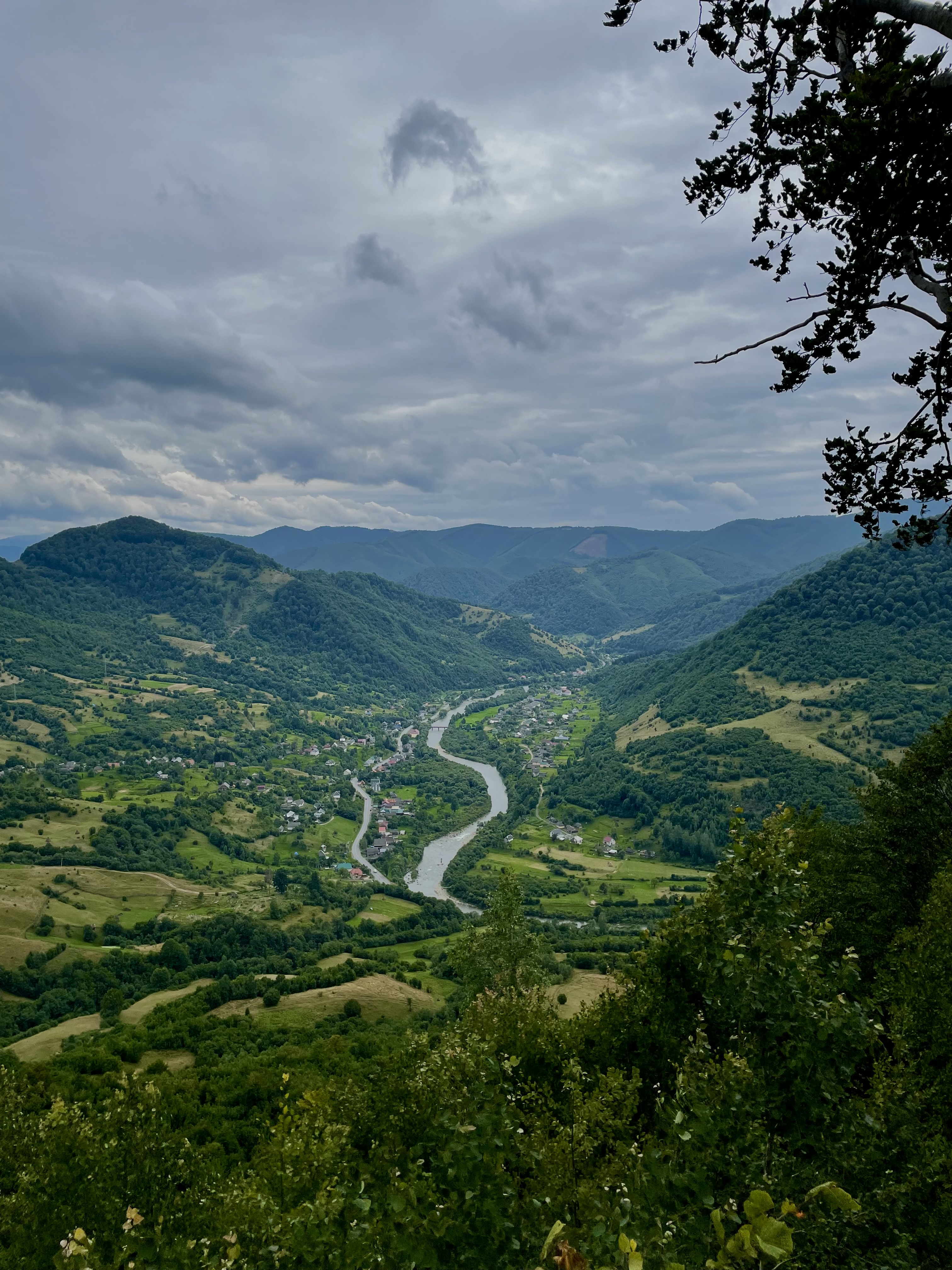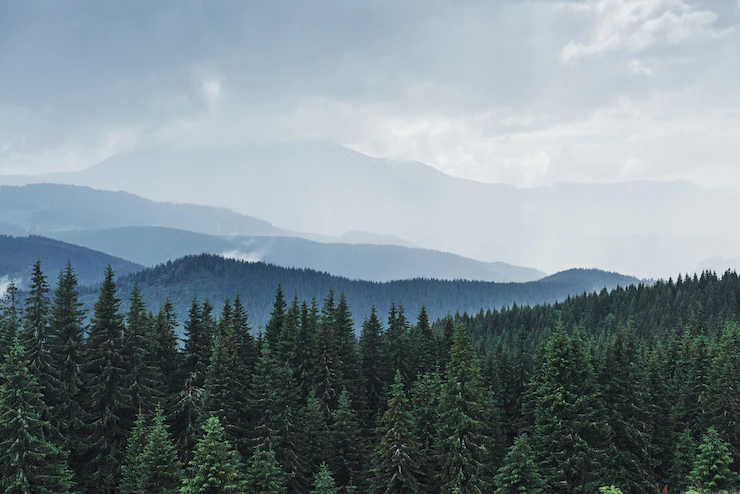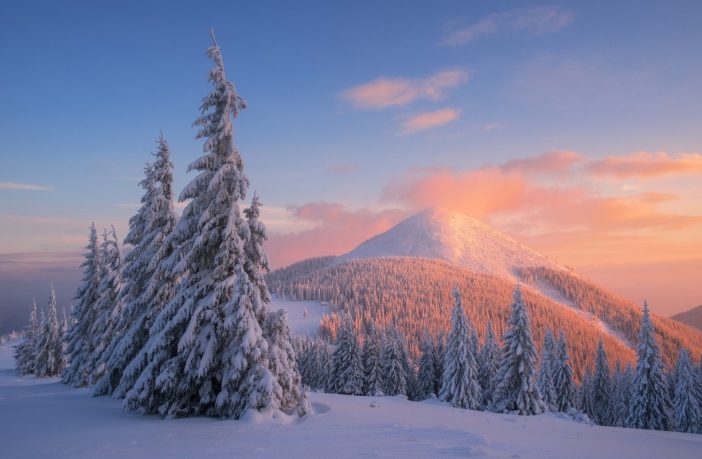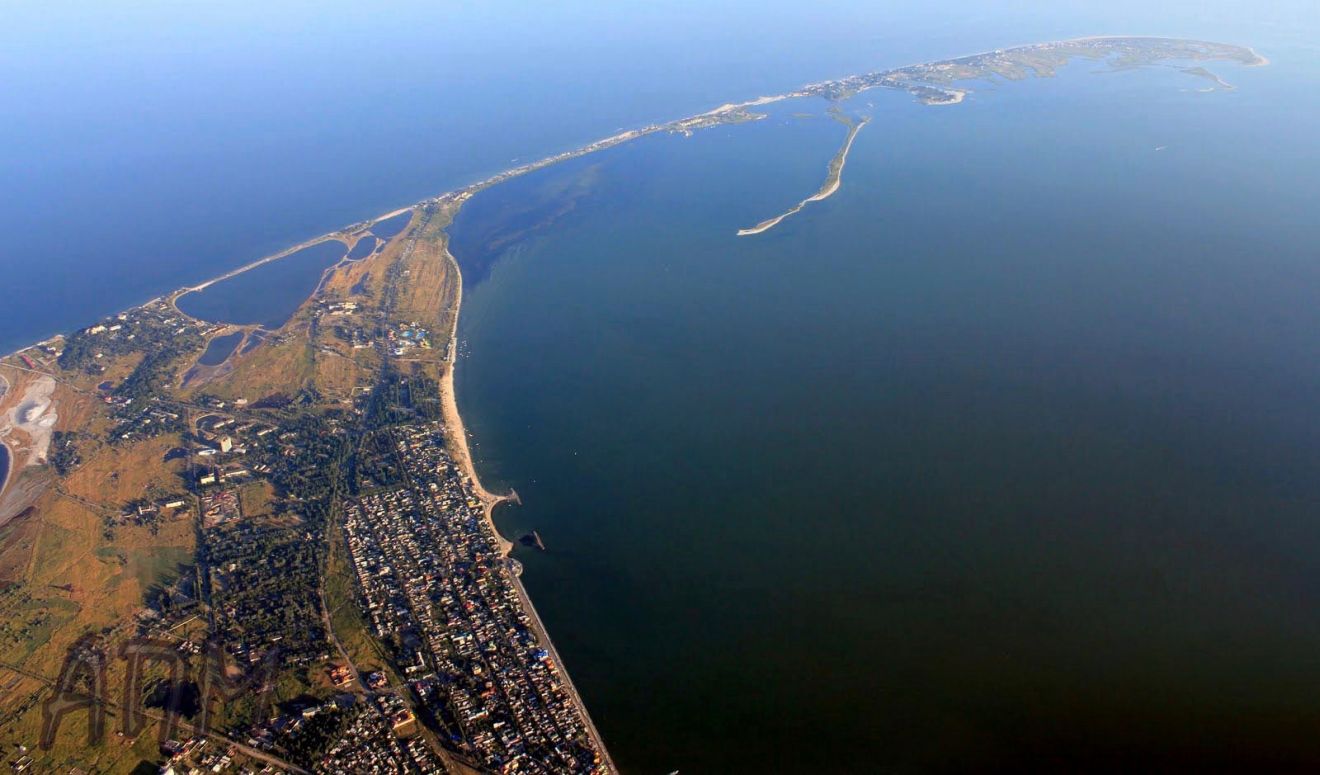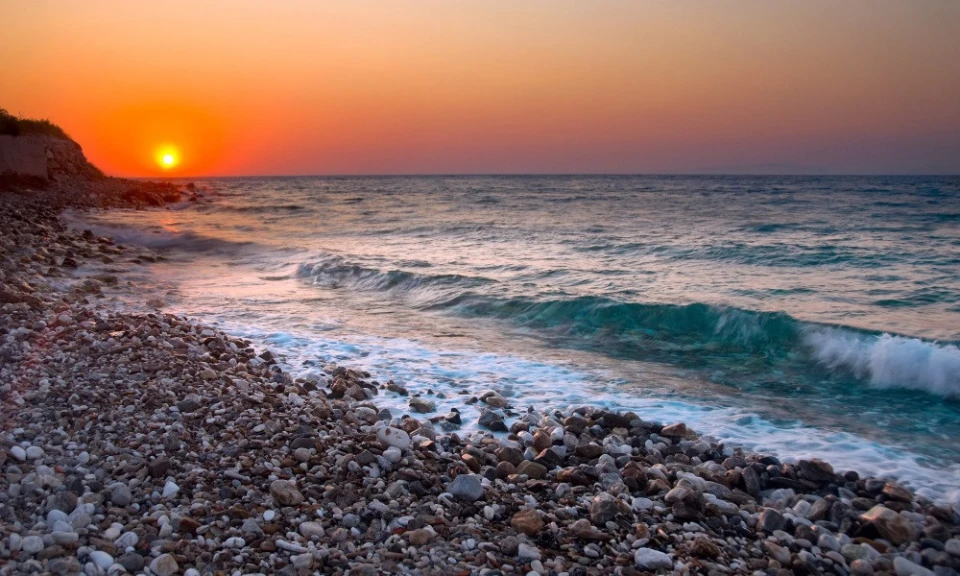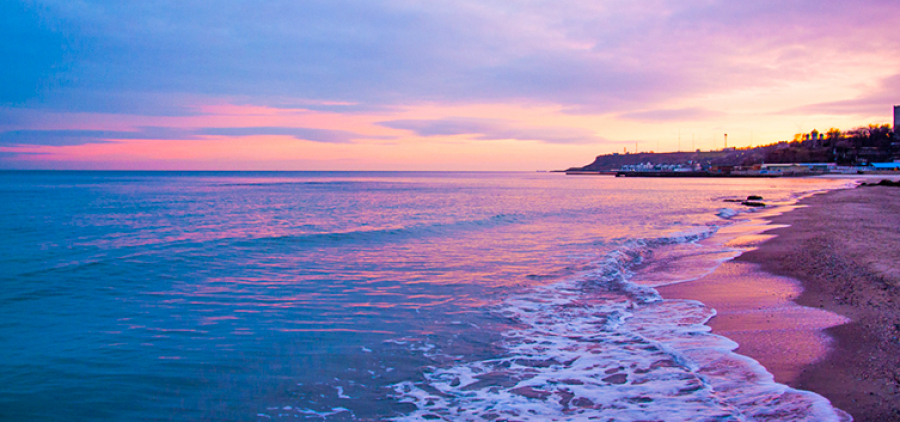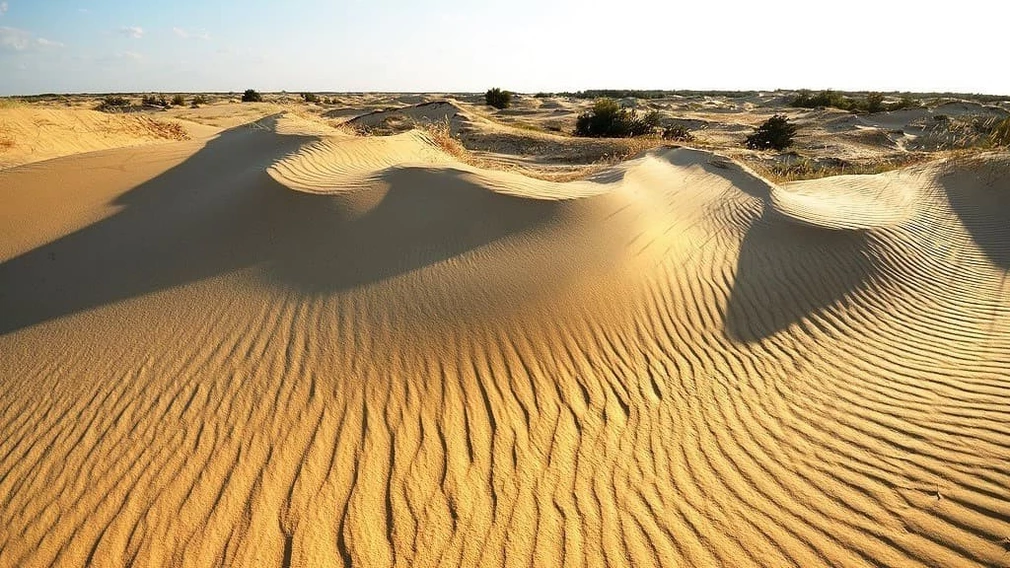Landscapes
Everything you would ever want to see in one country.
Ukraine is a land of breathtaking natural beauty and architectural marvels, offering a diverse tapestry of landscapes and structures that reflect its complex history and cultural heritage. From rolling steppes and fertile plains to majestic mountains and serene seas, Ukraine’s natural environments are as varied as they are stunning. Coupled with an architectural legacy that spans centuries and styles, the country presents a captivating blend of the old and the new. Scroll down to discover the unique biomes and architectural wonders that make Ukraine a destination like no other.
Diverse Landscapes of Ukraine
As it was mentioned, Ukraine is like hidden gem: it has everything. Let's break it down.
1. Fertile Plains and Perfect Soil
At the heart of Ukraine lies the vast Pontic Steppe, a region of expansive grasslands that stretches across the country. This area is renowned for its chernozem, or “black soil,” which is among the most fertile in the world. Rich in nutrients and humus, chernozem covers about 25% of Ukraine’s territory, making it a global agricultural powerhouse. The fertile plains support the cultivation of grains, sunflowers, and sugar beets, contributing significantly to the world’s food supply. Forty Percent of the World Food Program’s Wheat Supplies Come from Ukraine. The abundance of this perfect soil has earned Ukraine the nickname “the breadbasket of Europe.”
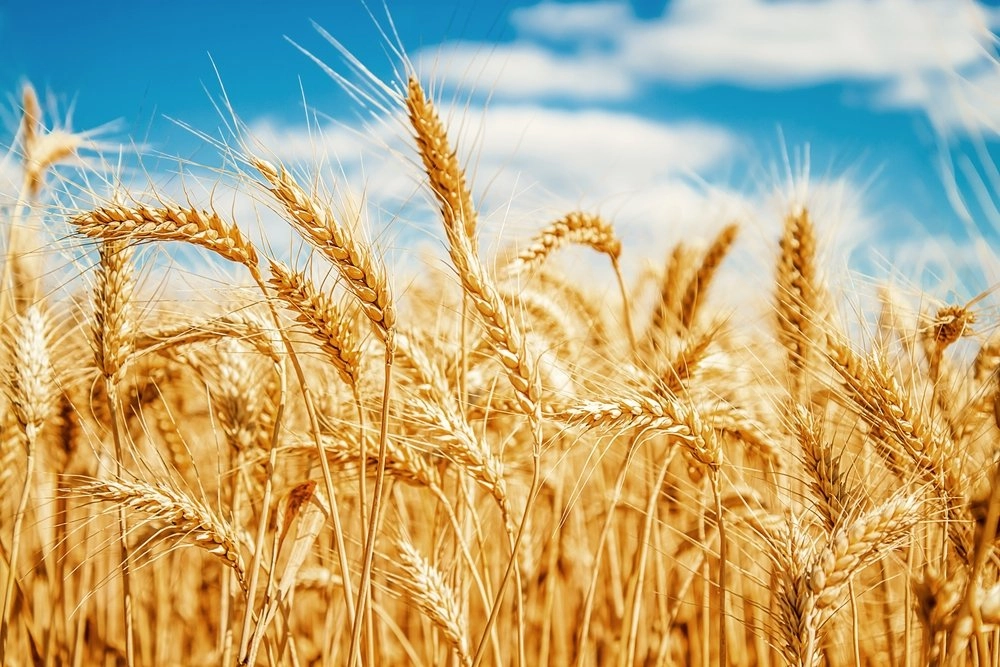
Ukrainian fields. Find the flag pattern here.
2. The Carpathian Mountains
In the western part of Ukraine rise the Carpathian Mountains, a majestic range offering stunning vistas, dense forests, and a haven for biodiversity. Peaks like Hoverla, the highest point in Ukraine at 2,061 meters (6,762 feet), attract hikers and nature enthusiasts from around the world. The Carpathians are home to unique flora and fauna, including brown bears, wolves, and lynxes. Traditional Hutsul villages nestled in the valleys preserve ancient customs, crafts, and music, providing a glimpse into a way of life closely connected to nature.
Carpathian Mountains
3. Seas and Coastlines
Ukraine’s southern border is graced by the Black Sea and the smaller Sea of Azov, offering over 2,700 kilometers (1,680 miles) of coastline. The coastal regions feature sandy beaches, cliffs, and port cities like Odesa, known for its cosmopolitan atmosphere and historic architecture. The Black Sea coast enjoys a mild climate, making it a popular destination for tourists seeking sun, sea, and relaxation. Marine life thrives in these waters, and the area plays a crucial role in maritime trade and ecology.
Unfortunately, the access to Azov Sea and most resort towns on the Black Sea coast was temporarily lost because of russia’s invasion.
Black and Azov sea coastlines
4. Deserts and Sand Dunes
Contrary to common perceptions, Ukraine is home to the Oleshky Sands, one of the largest deserts in Europe. Located in the Kherson Oblast, this sandy expanse covers about 160,000 hectares and features unique desert landscapes, sand dunes reaching up to 5 meters (16 feet) high, and rare vegetation adapted to arid conditions. The Oleshky Sands offer a surreal and unexpected environment, contrasting sharply with the surrounding steppes and forests.
Also, temporarily occupied.
Oleshky sands
5. Forests and Wetlands
Karpathian is not only region with great forests. The Polissya region in northern Ukraine boasts extensive mixed forests, wetlands, and marshes. This area is part of the larger European Green Belt and is characterized by its biodiversity and ecological significance. The forests are composed of pine, oak, birch, and alder trees, providing habitats for species like elk, wild boar, and numerous bird species. The Shatsk National Natural Park, with its pristine lakes and rich wildlife, is a highlight of this region.
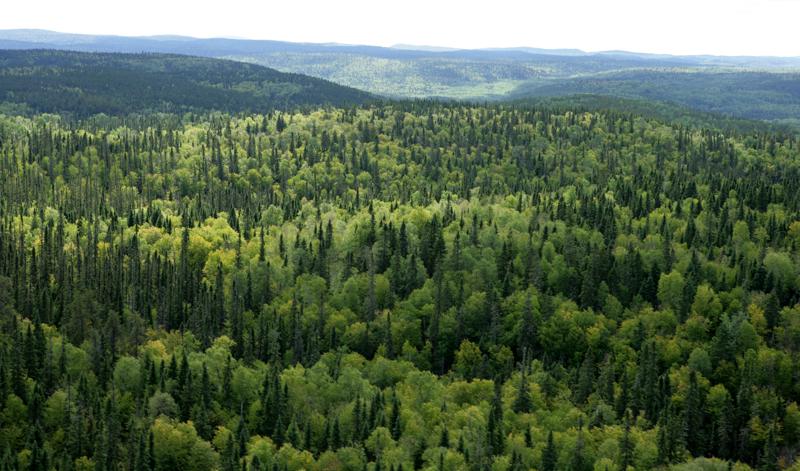
Forests and Wetlands in Polissya
6. Rivers and Lakes
Ukraine is crisscrossed by numerous rivers, the most prominent being the Dnipro River, which flows southward for over 2,200 kilometers (1,367 miles) before emptying into the Black Sea. The Dnipro and its tributaries are vital for transportation, hydroelectric power, and irrigation. Lakes such as Synevyr in the Carpathians, often called the “Pearl of the Carpathians,” add to the scenic beauty and are steeped in local legends.
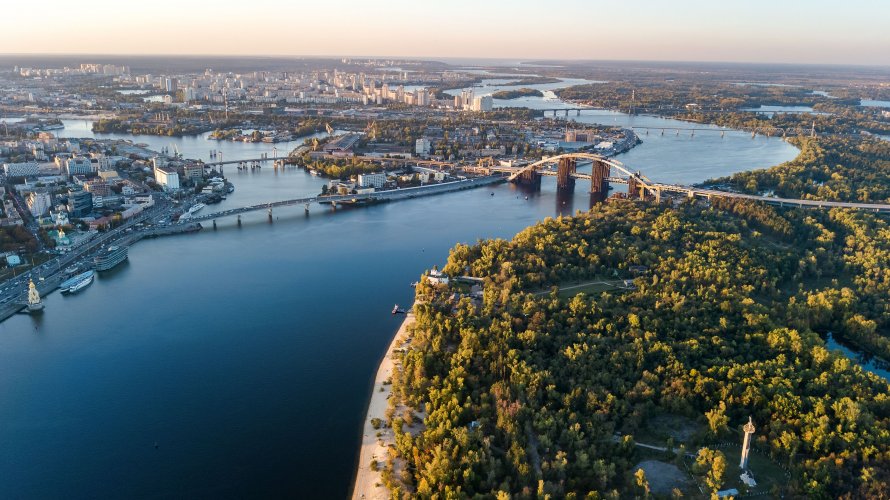
Dnipro river in Kyiv
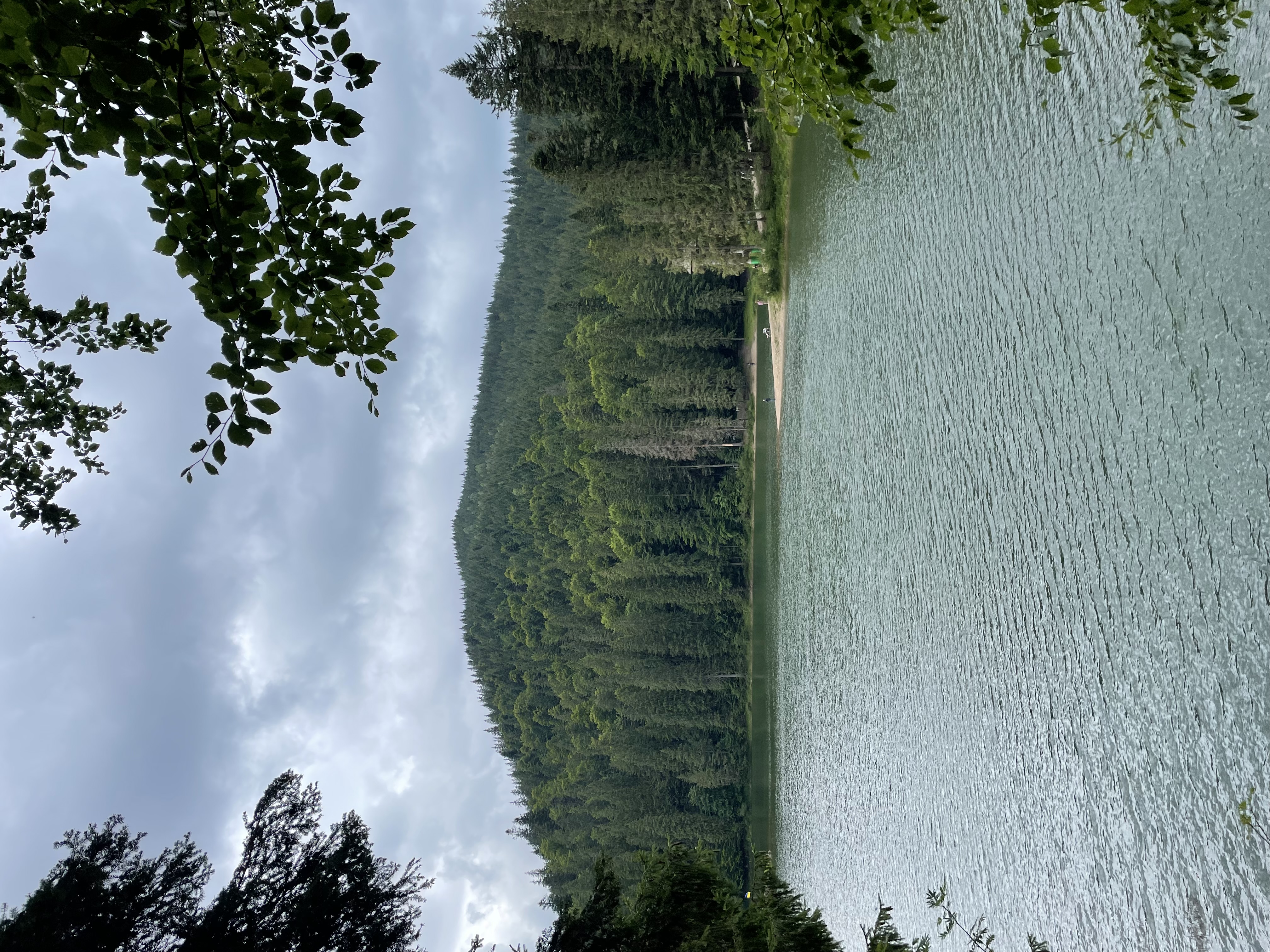
Synevyr lake in Carpathian
Rivers, Lakes, Mountains, Deserts, Fields, Forests – check. Moving on to the architecture. Thanks to our rich history, we have many buildings made in different styles and from different centuries. Scroll down to see them.
Architectural Marvels in Kyiv
The capital city, Kyiv, is a treasure trove of historical and architectural landmarks that showcase a blend of styles.
1. Saint Sophia’s Cathedral
A UNESCO World Heritage Site, this cathedral was constructed in the 11th century and is famed for its magnificent mosaics and frescoes that have survived since its foundation. It is a masterpiece of Kyivan Rus’ architecture and symbolizes the spiritual and cultural heritage of the nation.
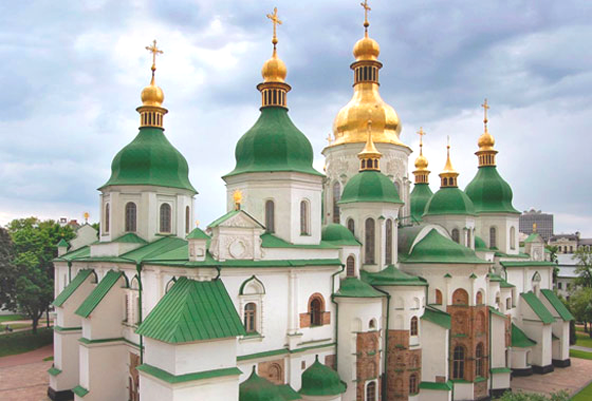
Saint Sophia’s Cathedral
2. Kyiv Pechersk Lavra
Also known as the Monastery of the Caves, this monastic complex dates back to 1051 and is another UNESCO World Heritage Site. The Lavra features golden-domed churches, subterranean caves housing mummified monks, and bell towers that dominate the city’s skyline.
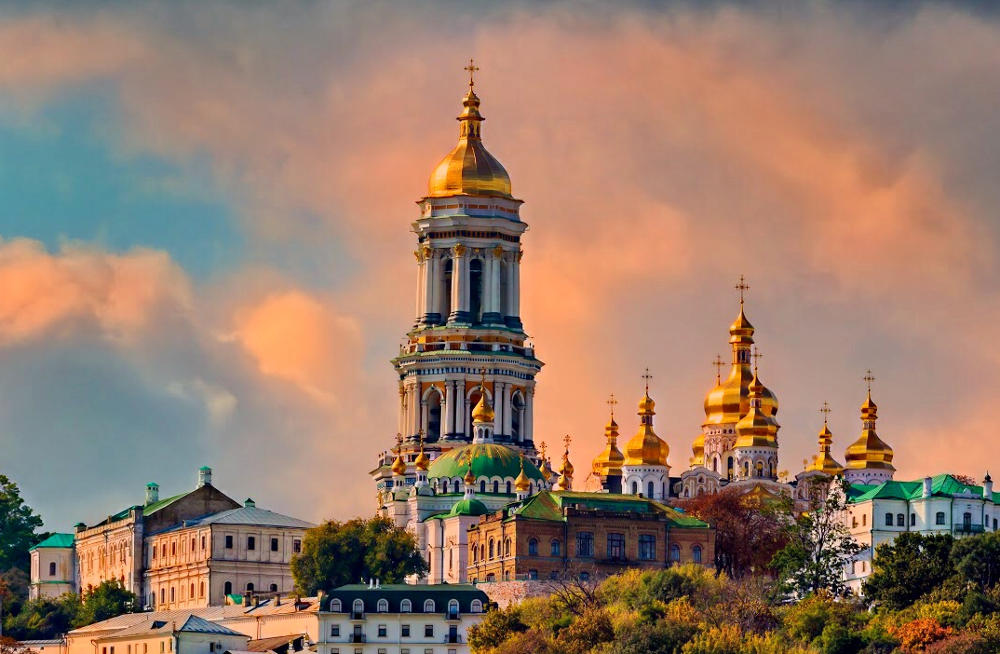
Kyiv Pechersk Lavra
3. Golden Gate
Originally built in 1037 as the main entrance to the medieval city, the Golden Gate has been reconstructed to reflect its historical significance and serves as a testament to Kyiv’s ancient fortifications. As Kyiv city grows, it takes place in the middle of city center.
That thing is older than first mentions moscow empire for about half a century.
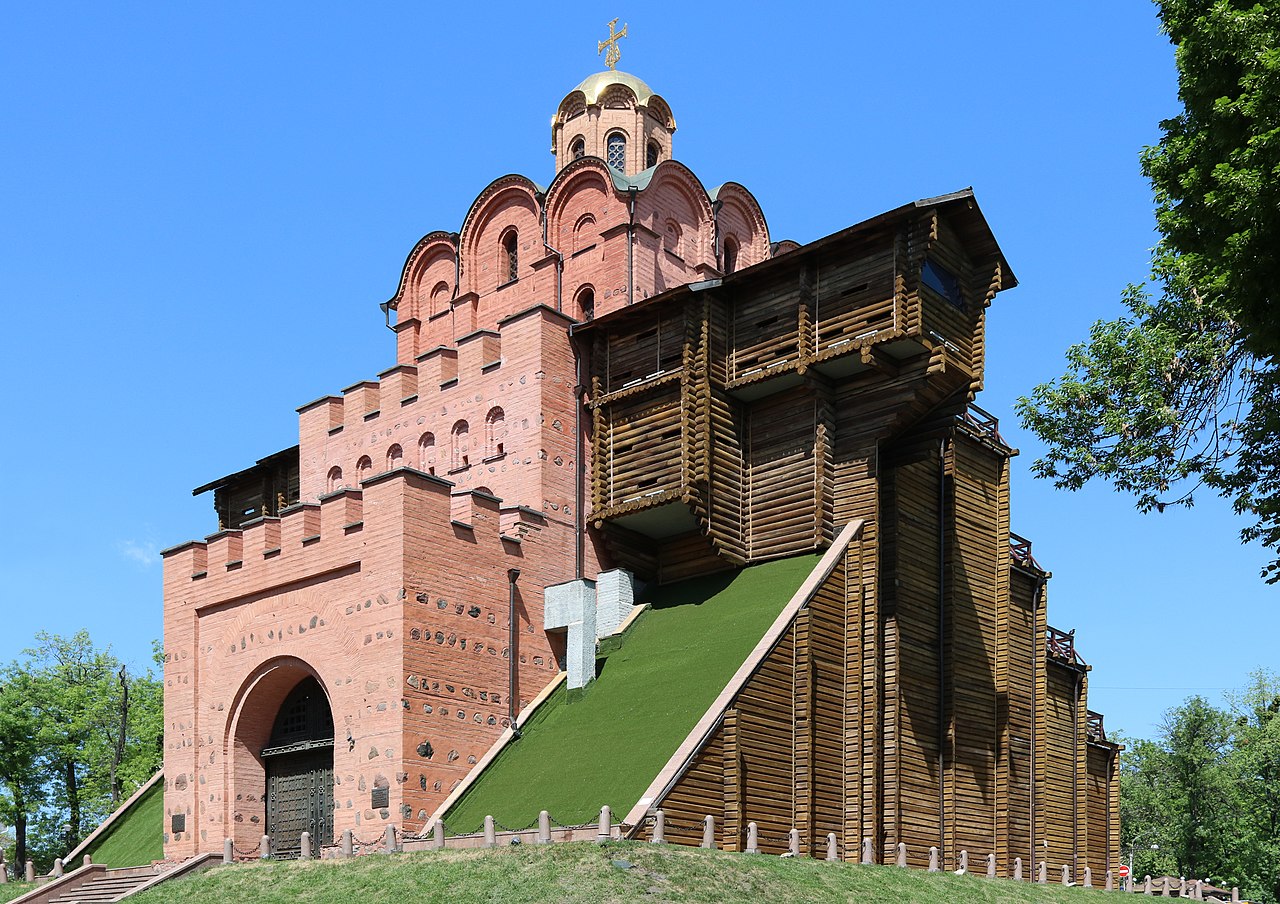
Golden Gate
Not by Kyiv alone. Ukraine’s architectural heritage is a mosaic of styles and influences, vividly displayed in other cities like Odesa, Kharkiv Lviv and Zaporizhzhia. Each city offers a unique architectural landscape that tells the story of its historical development, cultural diversity, and artistic achievements.
Odesa: The Pearl of the Black Sea
Located on the Black Sea coast, Odesa is renowned for its cosmopolitan charm and eclectic architecture that blends various European styles.
1. Potemkin Stairs
An iconic symbol of Odesa, the Potemkin Stairs consist of 192 steps (originally 200) creating an optical illusion of endless ascent when viewed from the bottom.
Built between 1837 and 1841, the stairs connect the city to the harbor and are a masterpiece of architectural design.
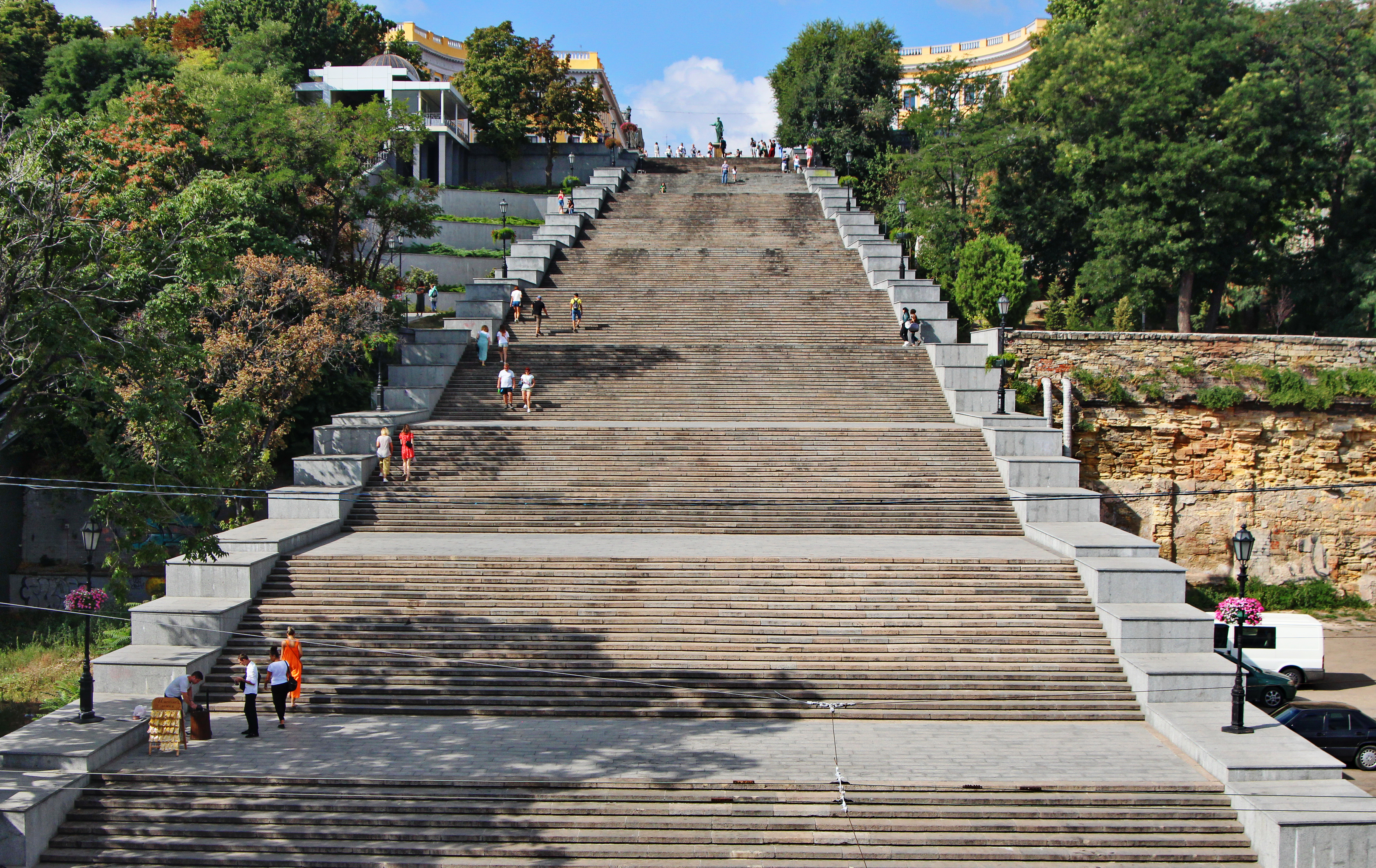
Potemkin stairs now
2. Odesa Opera and Ballet Theater
Opened in 1887, this theater is a stunning example of Neo-Baroque architecture. Designed by Viennese architects Ferdinand Fellner and Hermann Helmer, its lavish interiors feature gilded decorations, mirrors, and intricate stucco work, making it one of the most beautiful theaters in the world.

Odesa Opera and Ballet Theater
3. Prymorsky Boulevard
This elegant promenade overlooks the harbor and is lined with historical buildings showcasing Classical, Renaissance, and Art Nouveau styles. Notable landmarks include the Vorontsov Palace and the monument to Duke de Richelieu, the city’s first governor.
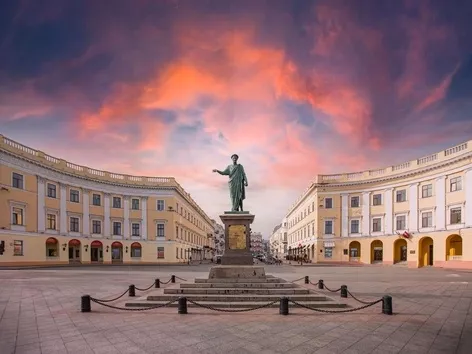
Statue of Duke de Richelieu, in the middle of Prymorsky Boulevard
Kharkiv: A Blend of History and Modernism
As Ukraine’s second-largest city and a major educational and industrial center, Kharkiv boasts an architectural landscape that combines historical monuments with Soviet-era and modern designs.
Freedom Square (Ploshcha Svobody)
One of the largest city squares in Europe, Freedom Square is the focal point of Kharkiv’s urban layout. It is surrounded by significant buildings that exemplify Constructivist architecture, a style that emerged in the Soviet Union in the 1920s.
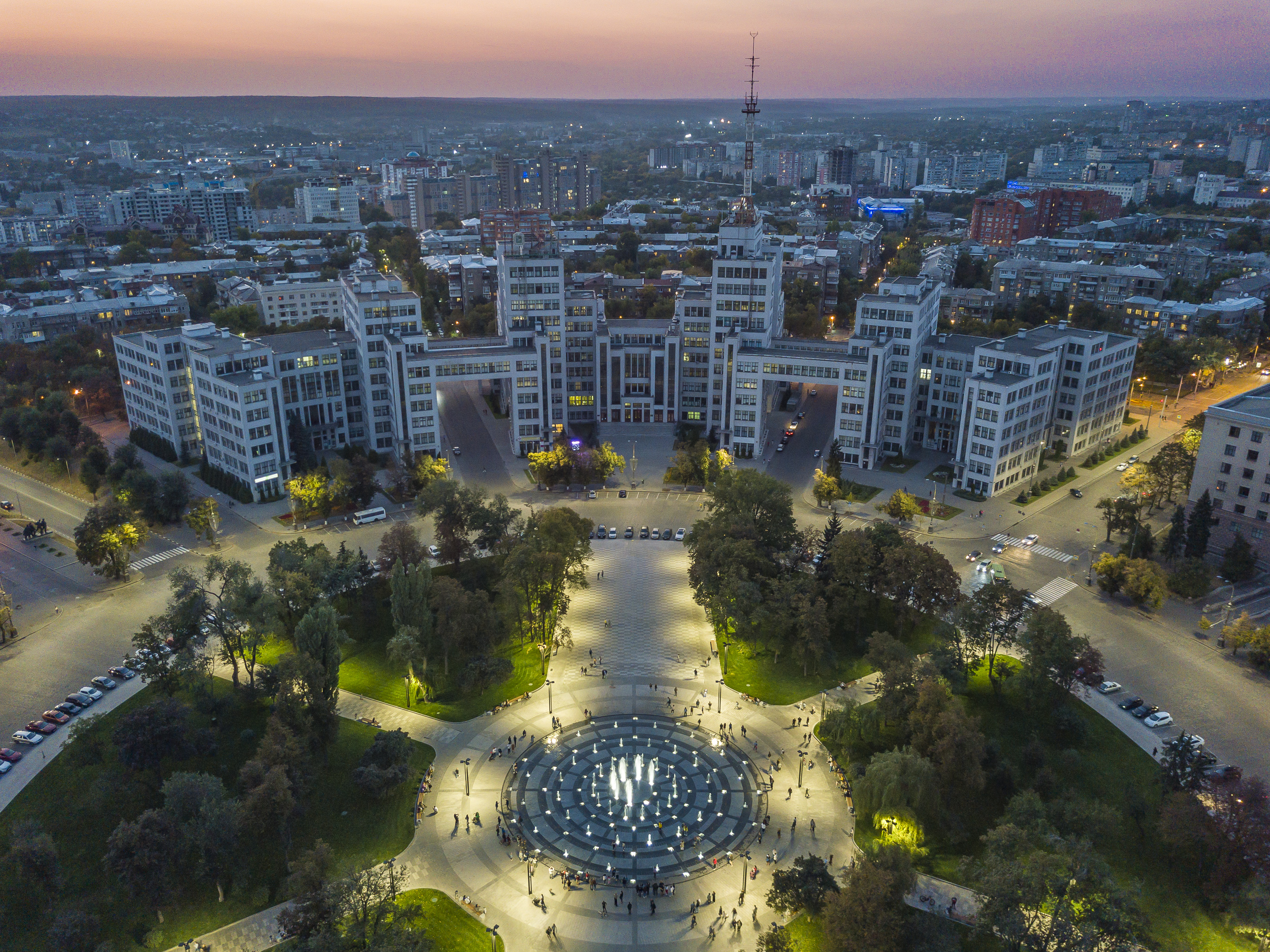
Freedom Square in Evening
Derzhprom
Also known as House of State Industry. Was constructed between 1925 and 1928, Derzhprom is one of the earliest and most notable examples of Constructivist architecture. This monumental complex symbolizes industrial progress and was among the tallest structures in Europe at the time of its completion.

Derzhprom, used as Government building
Annunciation Cathedral
Built in 1888–1901, this cathedral features a striking Neo-Byzantine style with red and white striped brickwork and a towering bell tower standing at 80 meters (262 feet). Its opulent interiors and intricate mosaics add to its grandeur.
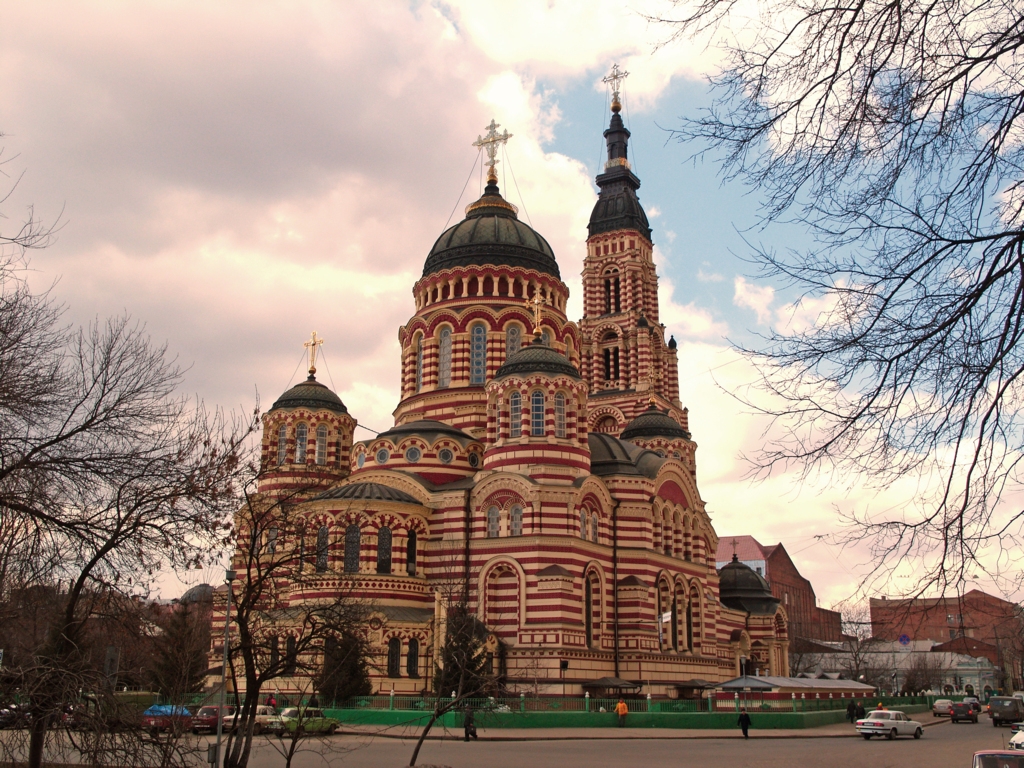
Annunciation Cathedral
Lviv: A Fusion of Styles and Eras
Lviv merits further attention for its architectural richness that encapsulates a fusion of Eastern and Western influences. It is also coffee-capital of Ukraine.
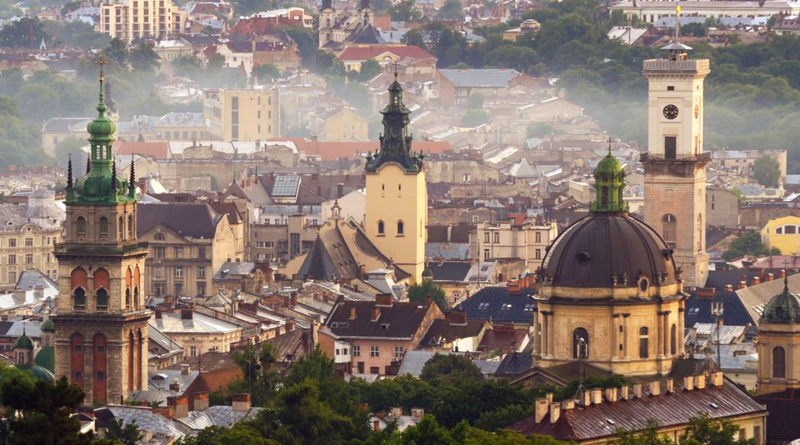
Lviv City (The city of Lion)
1. Market Square (Rynok Square)
The heart of Lviv’s Old Town, this square is surrounded by 44 buildings showcasing styles from Renaissance to Baroque and Classicism. Each townhouse tells a story of the merchants and nobility who once inhabited them.
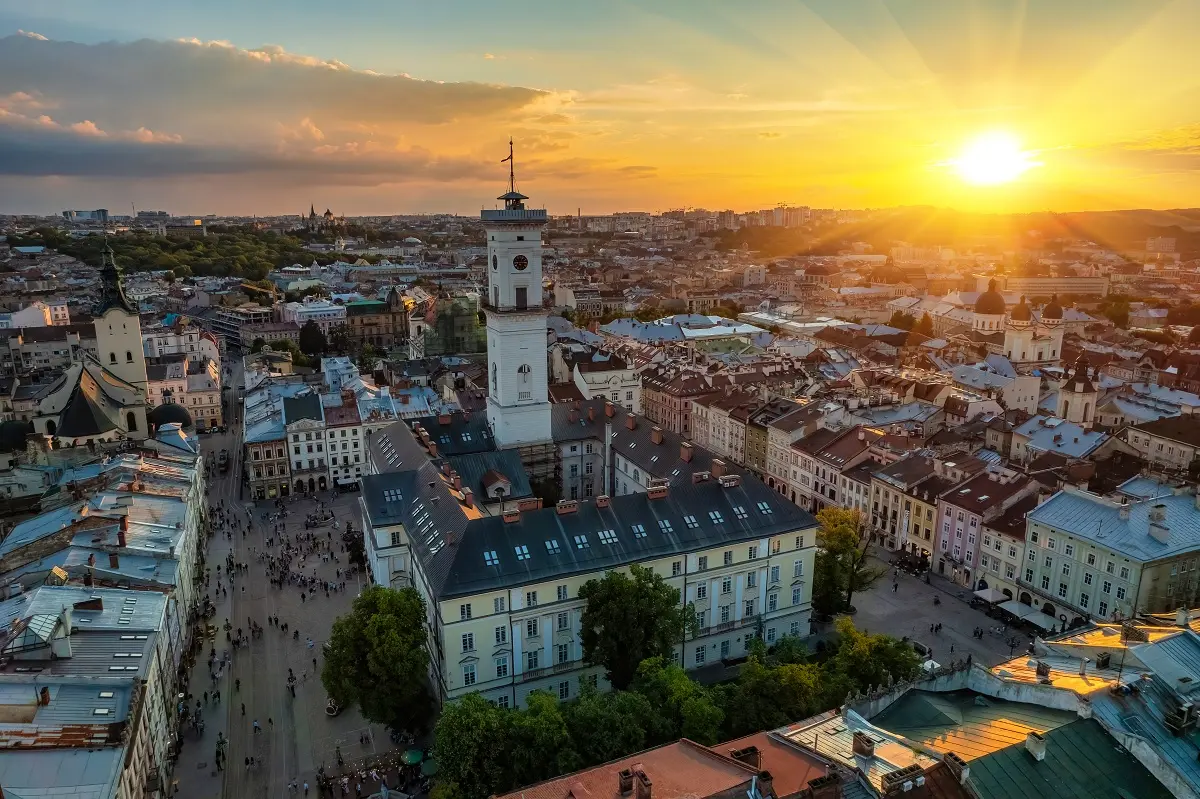
Rynok Square
2. The Dominican Cathedral
Also known as Church of the Holy Eucharist is one of the best representatives of Baroque architecture. The majestic building with an interesting past fascinates with its harshly mystical beauty and original sculptural decoration. Above the main entrance is the Latin inscription “SOLI DEO HONOR ET GLORIA”, which means “To God alone be honor and glory” - the hallmark of the Dominican Order, which called themselves “God's dogs”.
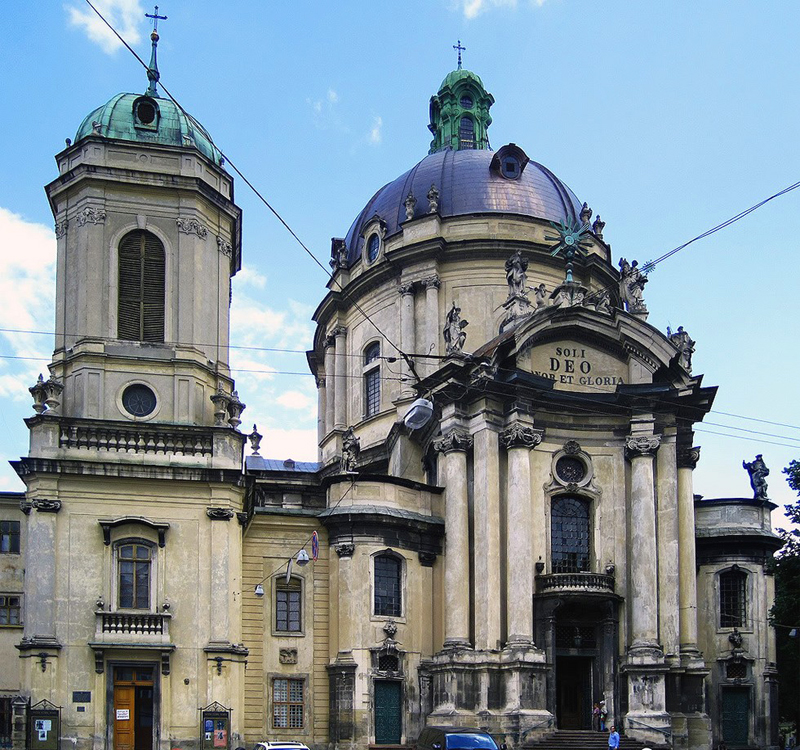
The Dominican Cathedral
3. Opera and Ballet Theatre of Lviv
Opened in 1900, this theater is a jewel of Neo-Renaissance and Neo-Baroque architecture. Designed by Zygmunt Gorgolewski, its grand façade and sumptuous interiors make it a cultural landmark.
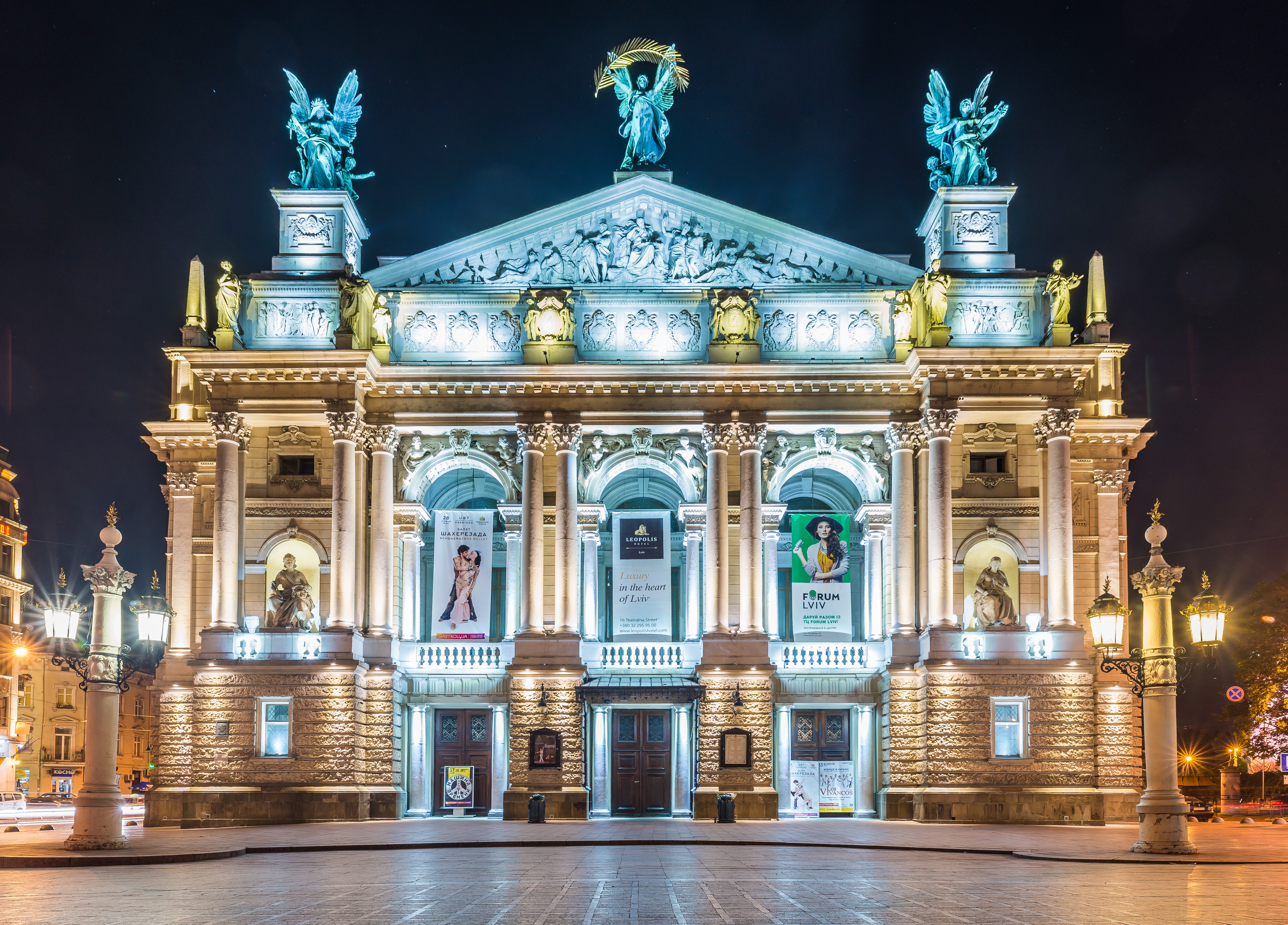
Opera and Ballet Theatre of Lviv
Zaporizhzhia: The Fusion of Industrial Might and Historical Heritage
Located on the banks of the Dnipro River, Zaporizhzhia seamlessly blends its rich Cossack history with impressive examples of industrial and modernist architecture.
Khortytsia Island
Khortytsia is the largest island on the Dnipro River and is considered the cradle of the Zaporizhian Cossacks. This national reserve preserves the history and culture of the Cossacks, featuring reconstructions of Cossack fortifications, wooden churches, and traditional dwellings.
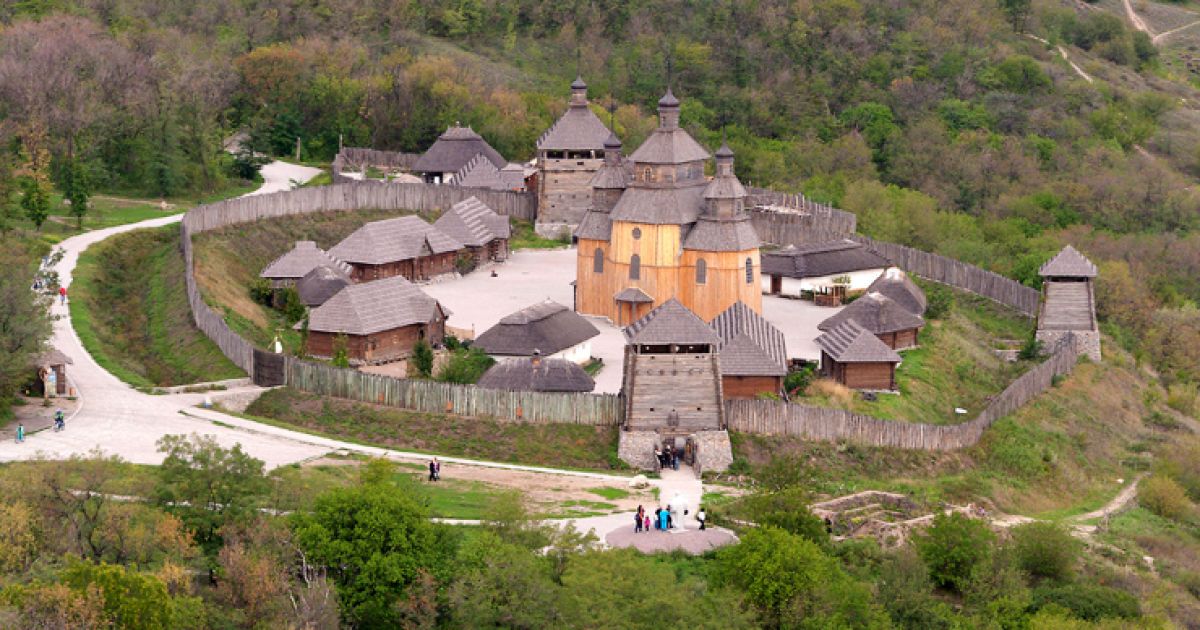
Khortytsia island
All Ukraine feels different in each part of it and that is mesmerizing.
Let's talk about that a bit more.
Architectural Diversity in Western Ukraine
The western regions of Ukraine, particularly cities like Lviv, Chernivtsi, and Mukachevo, exhibit a unique architectural landscape influenced by Central European styles due to historical ties with the Austro-Hungarian Empire and Poland.
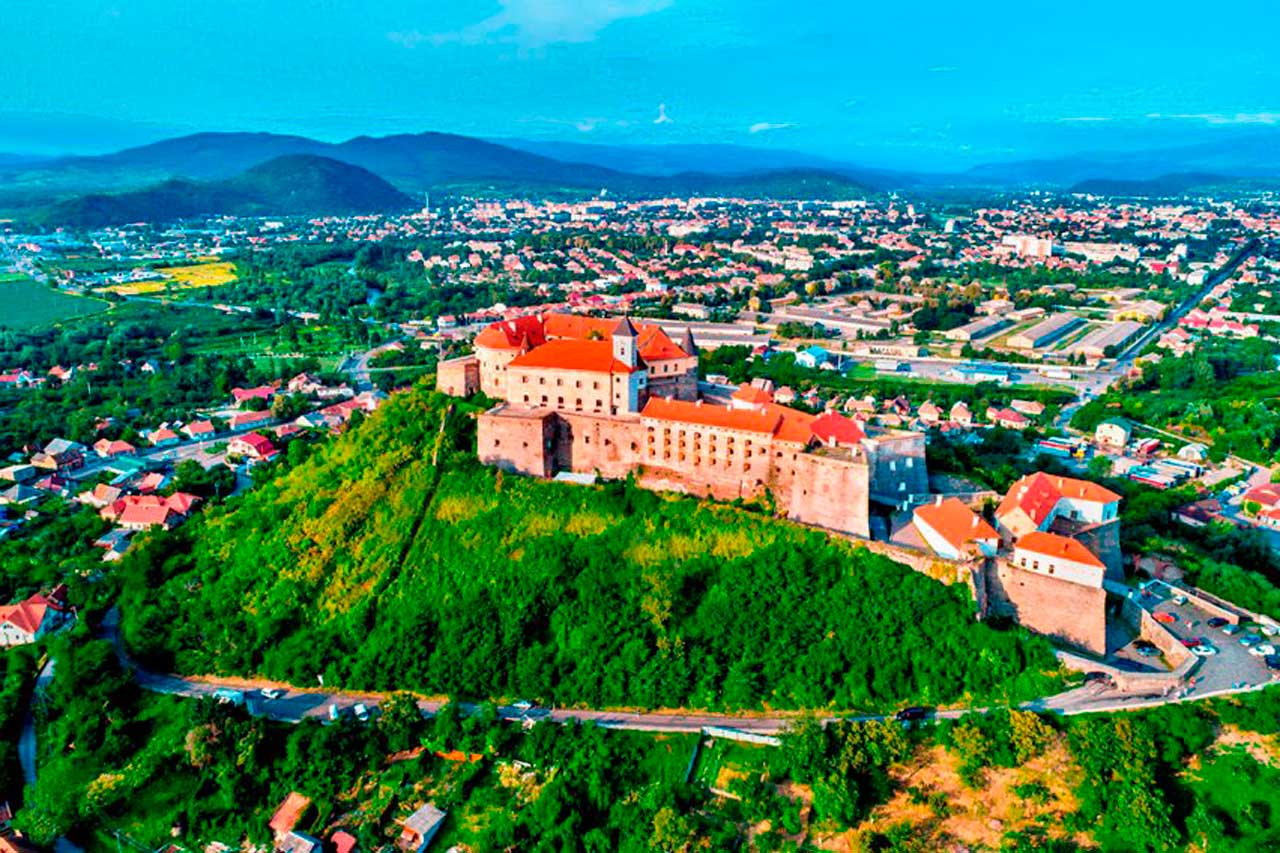
Mukachevo City
Lviv’s old town
The city features Gothic, Renaissance, Baroque, Rococo, and Art Nouveau buildings, often side by side, creating a picturesque and eclectic atmosphere.
By the way, The historic center of Lviv is renowned for its well-preserved medieval and Renaissance urban fabric.
Danylo the King statue, Lviv city center
Traditional Wooden Architecture
In the Carpathian region and other parts of Ukraine, traditional wooden churches and buildings represent an important aspect of architectural heritage.
Wooden Churches of the Carpathians
Many of these churches are listed as UNESCO World Heritage Sites, recognized for their unique construction techniques and aesthetic value. They feature tripartite designs, steep pitched roofs, and intricate wood carvings, reflecting the craftsmanship of local artisans.
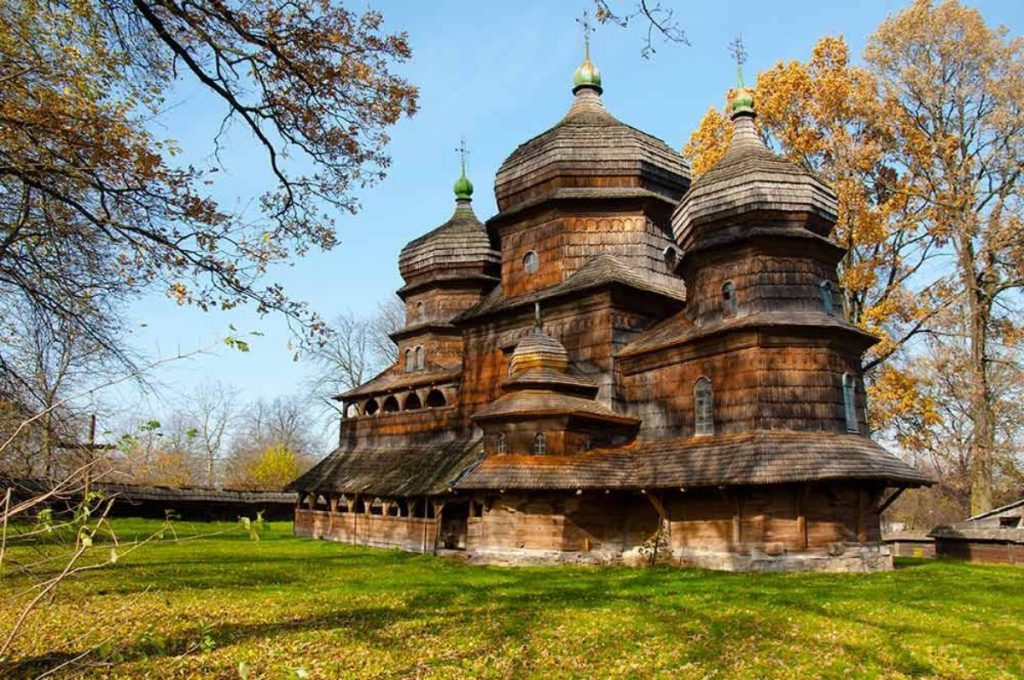
Church of St. Jura in Drohobych
Hutsul Architecture
Traditional houses and structures built by the Hutsul people in the Carpathians, characterized by wooden construction, gabled roofs, and decorative elements that blend functionality with artistic expression.
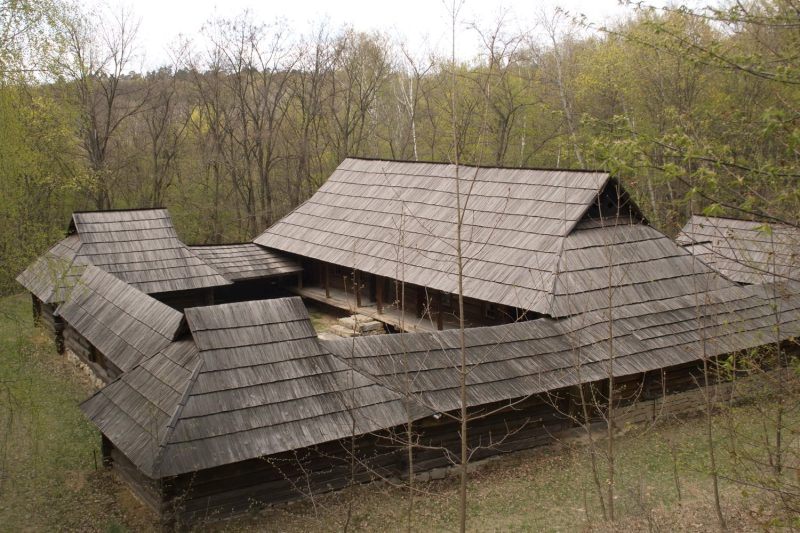
Hutsul House
Modern Architecture
Ukraine’s architectural landscape also includes contemporary structures that symbolize the country’s progress and innovation, following the modern trends and technologies.
Sky Towers
Modern skyscrapers, business centers, and residential complexes contribute to the city’s evolving skyline.
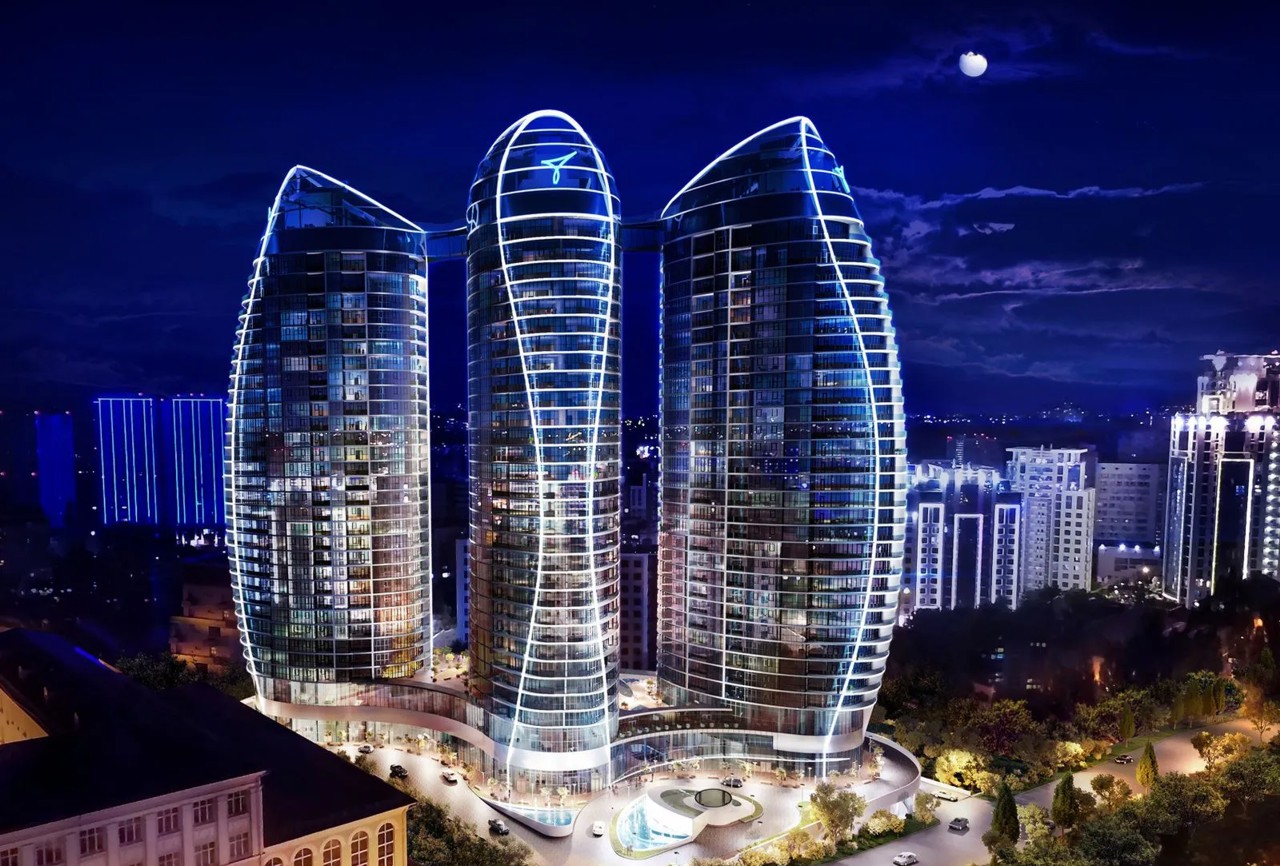
Taryan Towers, Kyiv
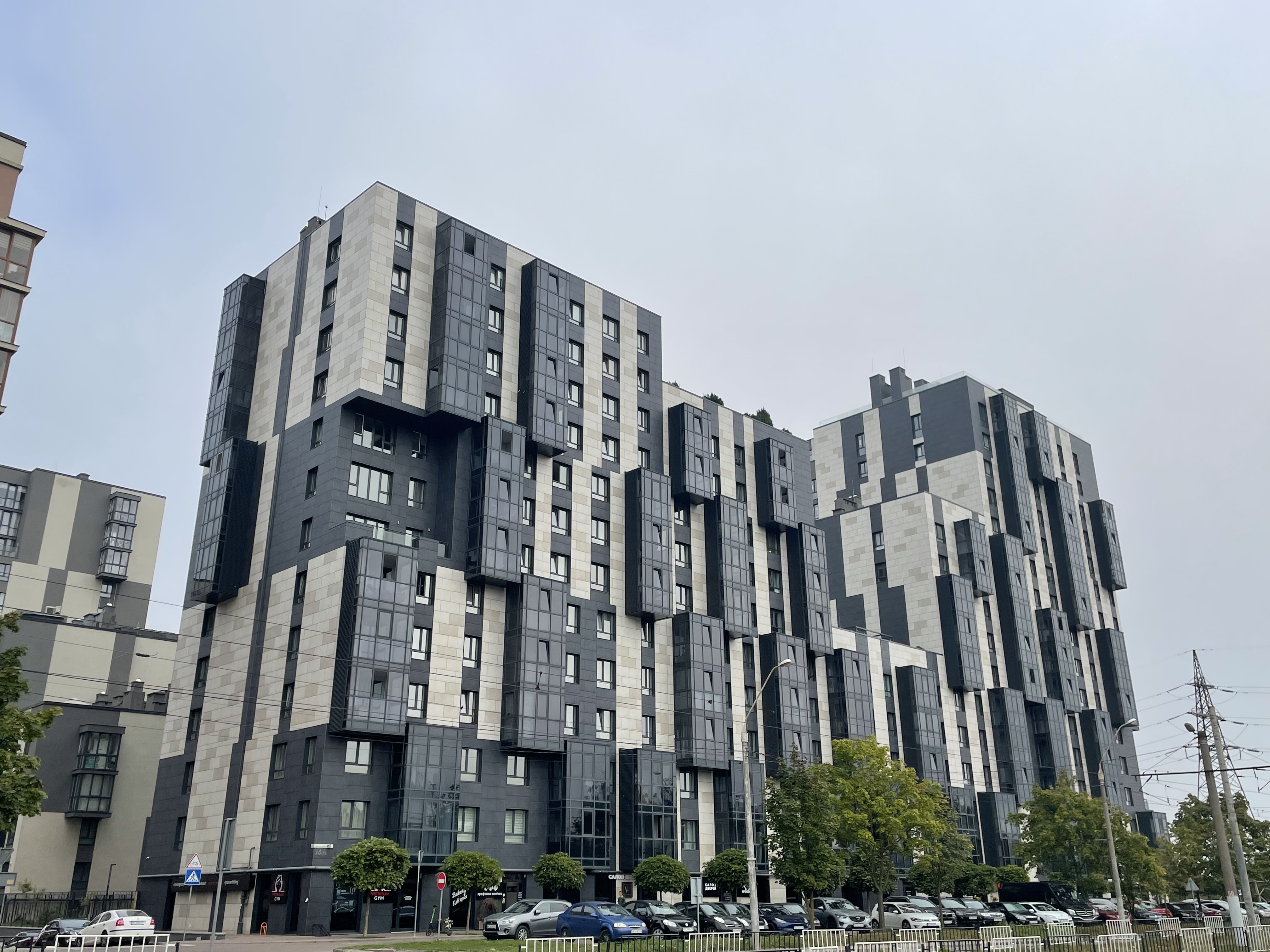
Residential complex Greenville, Lviv
Structures like the Gulliver Business Center and the Parus Business Center represent the integration of modern design with urban development. And it has the biggest screen I’ve ever seen on street.
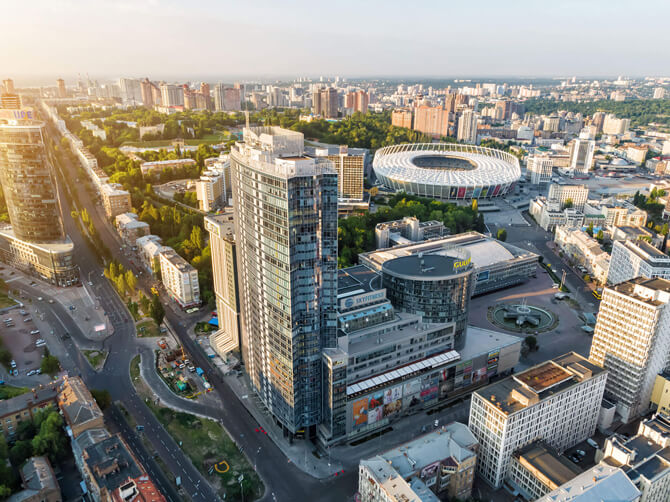
Gulliver from sky, Kyiv
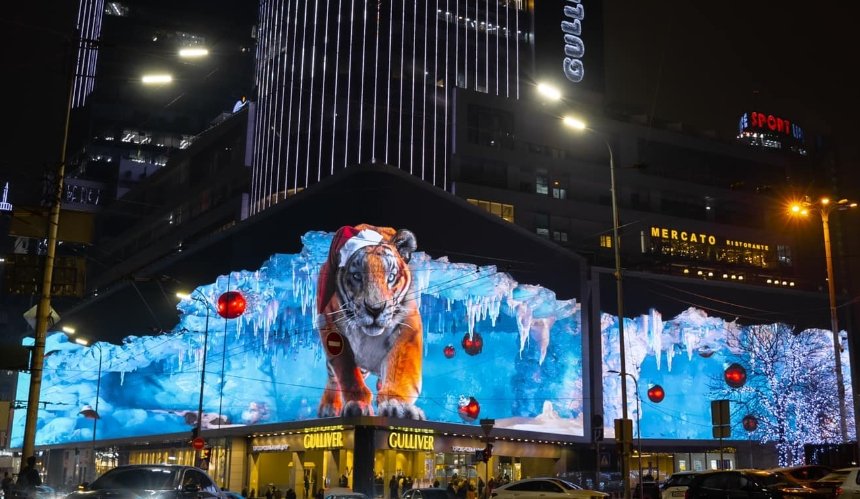
3D tiger on Gulliver Screen
Public Art and Urban Spaces
Cities across Ukraine are embracing public art installations, revitalized urban spaces, and sustainable architecture, reflecting a commitment to cultural growth and environmental consciousness.

Modern Exhibition in Kyiv
Experience Ukraine’s Natural and Architectural Wonders
Ukraine’s diverse landscapes offer something for every traveler—whether it’s exploring the serene beaches along the Black Sea, hiking in the Carpathian Mountains, or wandering through the surreal Oleshky Sands. The country’s rich architectural heritage provides a journey through time, showcasing the evolution of styles and influences that have shaped its cities and towns. From ancient cathedrals and fortresses to modern urban developments, Ukraine invites you to discover its multifaceted beauty and the stories embedded within its land and structures.
By the way, it is safe to visit Ukraine like right now, even during the war. You would have to go to shelter while Air alerts, but there is application for that, so you will have time.
